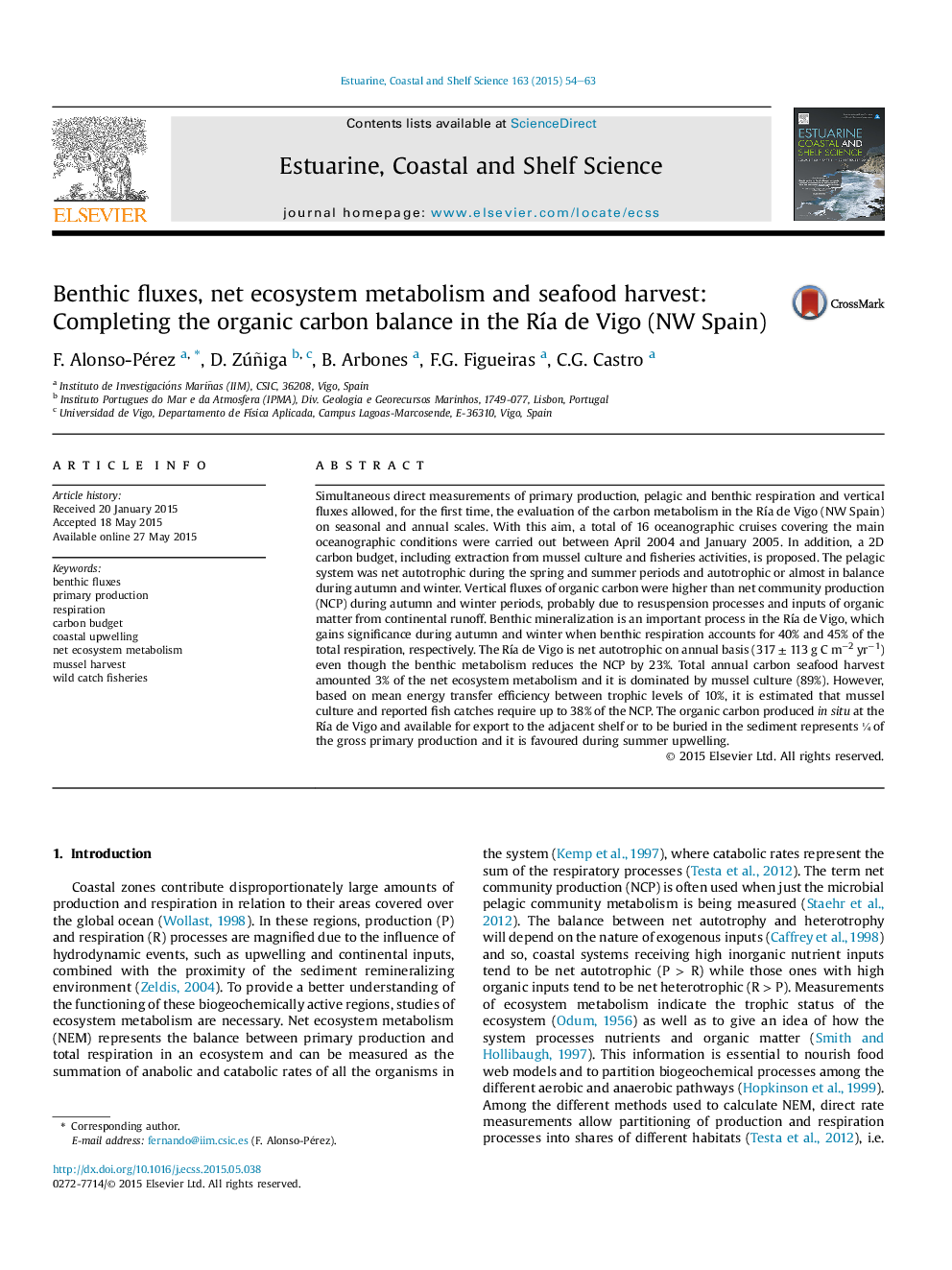| کد مقاله | کد نشریه | سال انتشار | مقاله انگلیسی | نسخه تمام متن |
|---|---|---|---|---|
| 4539394 | 1326597 | 2015 | 10 صفحه PDF | دانلود رایگان |

• An annual carbon budget including benthic fluxes and seafood harvest is proposed.
• The Ría de Vigo is net autotrophic on annual basis (317 ± 113 g C m−2 yr−1).
• Benthic remineralization reduces the autotrophy of the system by 23%.
• Mussel culture and fisheries require 38% of the net community production.
• Shelf carbon export and sediment burial account for ¼ of the gross primary production.
Simultaneous direct measurements of primary production, pelagic and benthic respiration and vertical fluxes allowed, for the first time, the evaluation of the carbon metabolism in the Ría de Vigo (NW Spain) on seasonal and annual scales. With this aim, a total of 16 oceanographic cruises covering the main oceanographic conditions were carried out between April 2004 and January 2005. In addition, a 2D carbon budget, including extraction from mussel culture and fisheries activities, is proposed. The pelagic system was net autotrophic during the spring and summer periods and autotrophic or almost in balance during autumn and winter. Vertical fluxes of organic carbon were higher than net community production (NCP) during autumn and winter periods, probably due to resuspension processes and inputs of organic matter from continental runoff. Benthic mineralization is an important process in the Ría de Vigo, which gains significance during autumn and winter when benthic respiration accounts for 40% and 45% of the total respiration, respectively. The Ría de Vigo is net autotrophic on annual basis (317 ± 113 g C m−2 yr−1) even though the benthic metabolism reduces the NCP by 23%. Total annual carbon seafood harvest amounted 3% of the net ecosystem metabolism and it is dominated by mussel culture (89%). However, based on mean energy transfer efficiency between trophic levels of 10%, it is estimated that mussel culture and reported fish catches require up to 38% of the NCP. The organic carbon produced in situ at the Ría de Vigo and available for export to the adjacent shelf or to be buried in the sediment represents ¼ of the gross primary production and it is favoured during summer upwelling.
Figure optionsDownload high-quality image (136 K)Download as PowerPoint slide
Journal: Estuarine, Coastal and Shelf Science - Volume 163, Part B, 20 September 2015, Pages 54–63